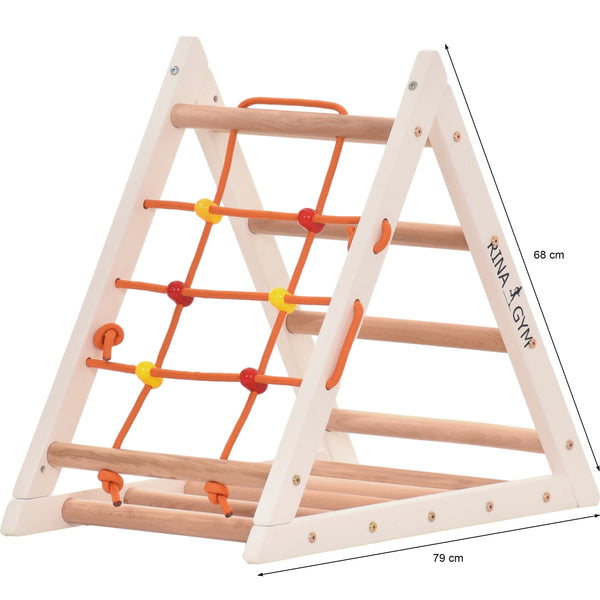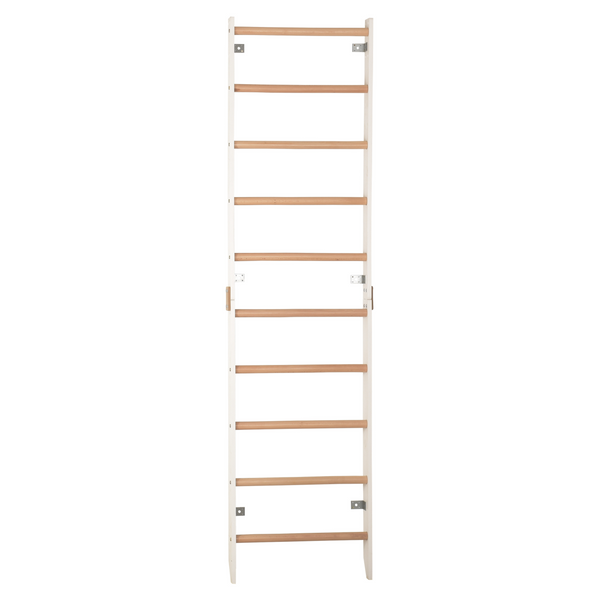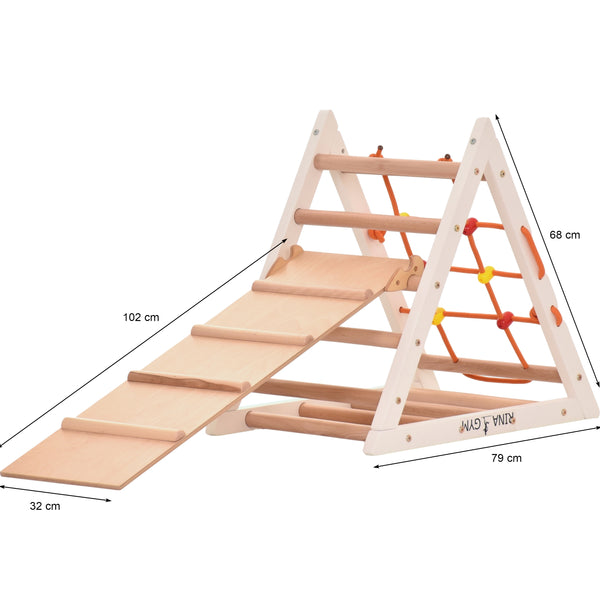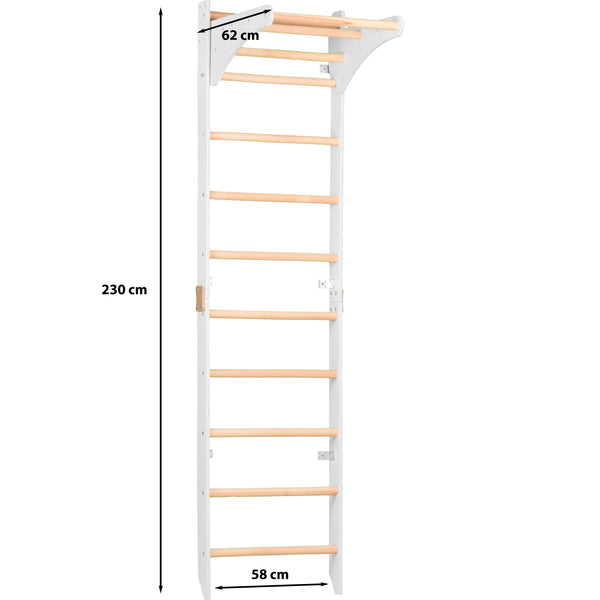Child won't play alone? 7 things you should definitely change*

Independent play: The benefits and how to achieve it
Independent play is a valuable skill for a child's development. It not only fosters creativity, but also problem-solving skills and independence. Children who play alone learn to entertain themselves and use their own imagination. It also provides parents with the opportunity to take short breaks and complete their own tasks.
Advantages of playing independently
Promoting creativity
Through play, children develop their own world and invent new games. This supports the child's creativity and imagination, as they can create their own stories and try out different roles. Creative games encourage the ability to think outside the box and find innovative solutions to problems.
Strengthening problem-solving skills
During play, children encounter various challenges and problems that they must solve independently. This fosters their ability to find creative solutions and builds their self-confidence. Children learn to solve problems through trial and error, which is an important life skill.
Development of independence
Children who play alone learn to entertain themselves and make their own decisions. This is an important step toward self-reliance and independence, which will benefit them later in life. Self-reliance also means that children learn to trust themselves and take responsibility for their actions.
Improve concentration and attention
Playing alone can improve a child's concentration and attention span. Through focused play, children learn to concentrate on a task for longer periods and complete it. This can have a positive impact on their academic performance and other activities that require concentration.
Emotional development and self-regulation
Playing alone offers children the opportunity to better understand and regulate their emotions. They learn to manage frustration and self-soothe when things don't go as planned. This ability to self-regulate is crucial for a child's emotional maturity and well-being.
However, to achieve these benefits, parents need to take some steps. Here are seven things you should definitely change if your child isn't playing alone.

Why your child doesn't play alone: The decisive factors at a glance
There are several reasons why a child might not play alone. Understanding these is the first step to solving the problem.
- Excessive dependence on parents
Many children have difficulty playing alone because they rely too heavily on their parents for constant attention and entertainment. This can be caused by too much shared play or excessive supervision. Children become accustomed to their parents always being around and entertaining them, which inhibits the development of the ability to play alone.
- How to reduce dependence
To reduce dependency, it's important to gradually teach your child to entertain themselves. This can be done through small, controlled steps, where the child learns to play alone for short periods and gradually increases these periods. Parents can use these periods to observe the child and ensure that they are comfortable and safe.
- Lack of suitable toys
Another important factor can be the lack of interesting and stimulating toys. Without the right tools to stimulate their imagination, it can be difficult for children to entertain themselves. The right toys can make all the difference between a child feeling comfortable alone or not.
- Choosing the right toy
Toys should not only be entertaining, but also educational and stimulating. Try to offer a variety of toys that appeal to a child's various senses and abilities. These include building blocks, puzzles, play dough, and creative crafts. High-quality toys can spark a child's interest and encourage them to try and discover new things.
- Uncertainty and fear
Some children feel insecure or anxious when asked to play alone. This may be due to previous experiences or a general feeling of insecurity. Children need a sense of security and safety to develop freely.
- Strategies for overcoming uncertainty
Parents can support their children by creating a safe and familiar environment. This can be done by setting up a cozy, hazard-free play area where the child feels comfortable. Parents should also be encouraging and supportive when the child attempts to play alone. A gradual approach to playing alone can help the child build confidence.
- Child's developmental level
The child's developmental level also plays a major role. Younger children often need more guidance and support, while older children may demonstrate more independence. It's important to consider the child's individual needs and abilities.
- Set age-appropriate expectations
Parents should set realistic expectations for their child's ability to play alone. A two-year-old child will be able to play alone for less time than a five-year-old. It's important to be patient and give the child the time they need to develop this skill. Parents should be aware that learning to play alone is a process that requires time and patience.

Parents as Key: The Changes You Can Make
Parents play a crucial role in encouraging their child to play independently. Here are some changes you can make to support your child.
- Gradually reduce shared playtime
Start by gradually reducing the amount of time you play with your child. Encourage your child to play alone for short periods and gradually increase these periods. This can be done by establishing set playtimes during which the child plays alone while you stay nearby and provide security. Through this gradual reduction, the child learns to increasingly entertain themselves and develop confidence in their own abilities.
- Create a safe and stimulating environment
Make sure your child plays in a safe and stimulating environment. A well-designed play area can encourage creativity and independent play. Make sure this area is free of distractions and that all necessary toys and materials are within easy reach. A stimulating environment can spark your child's interest and encourage them to try new things and be creative.
- Offer a selection of suitable toys
Invest in toys that stimulate your child's imagination and problem-solving skills. High-quality, versatile toys can help spark your child's interest. Here's a selection of suitable toys: All products. Versatile toys offer children the opportunity to play different games and continually create new scenarios.
- Give your child space and time
Allow your child to play at their own pace and engage in their own activities. It's important that children have the freedom to organize their own playtime. Give your child enough time and space to develop new games and ideas without feeling pressured. Children need space to develop their imaginations and pursue their own interests.
- Encourage and praise your child
Praise your child when they play alone and continue to encourage them. Positive reinforcement can help your child develop more confidence and feel more comfortable playing alone. Recognize even small successes and let your child know that you are proud of their ability to entertain themselves. Praise and encouragement can build your child's self-esteem and motivate them to continue playing independently.
- Avoid overstimulation
Avoid overwhelming your child with too many activities or toys. Overstimulation can cause children to have difficulty concentrating on a game and playing alone. A well-chosen, limited number of toys can help focus a child's attention and make their playtime more effective. Less is often more when it comes to encouraging a child to concentrate on a game.
- Be a role model
Show your child that it's okay to entertain themselves. When children see their parents spending time alone and pursuing their own interests, they're more likely to try it themselves. Read a book, do a craft, or pursue a hobby while your child plays nearby. By setting a good example, you can show your child that solitary entertainment is a positive thing.
The right toy: How to encourage your child to play alone
Choosing the right toy is crucial to encouraging your child to play independently. Here are some tips to help you find the right toy:
- versatility
Choose toys that can be used in a variety of ways. Building blocks, Lego bricks, or play dough are good examples of versatile toys that stimulate the imagination. Such toys offer endless possibilities and can be combined and used in new ways over and over again.
Examples of versatile toys
Building blocks: These can be used to build towers, houses, or complex structures. Children can let their creativity run wild and create new structures.
Lego bricks: Similar to building blocks, Lego bricks offer countless combination possibilities and promote spatial thinking and fine motor skills.
Play-Doh: Play-Doh allows children to model figures, shapes, and various objects. It promotes fine motor skills and creativity.
- Challenge and reward
Toys that offer a challenge and a reward for solving them can pique your child's interest. Puzzles or skill games are ideal for this. They challenge the child mentally and offer great satisfaction when the task is completed.
Examples of challenging toys
Puzzles: Depending on the child's age and abilities, puzzles of varying difficulty levels can be chosen. They promote logical thinking and concentration skills.
Skill games: Games that require dexterity and patience, such as marble runs or balance games, can be very stimulating.
- Creative possibilities
Encourage your child's creativity with toys that allow them to create their own world. Art sets, craft materials, or dress-up boxes offer many creative possibilities. Such toys support your child's artistic development and expressiveness.
Examples of creative toys
Art sets: Provide paints, brushes, and paper to encourage children's artistic skills. Children can express their emotions and thoughts through pictures.
Craft materials: Various craft sets containing paper, glue, scissors, and decorative materials stimulate creativity and promote fine motor skills.
Dress-up boxes: Costumes and accessories that allow the child to try out different roles and characters promote role play and social development.
- Natural materials
Toys made from natural materials like wood or fabric can provide a pleasant tactile experience and stimulate your child's senses. Such toys are often durable and offer an environmentally friendly alternative to plastic toys.
Examples of toys made from natural materials
Wooden toys: Wooden puzzles, building blocks and wooden trains are durable and promote motor skills.
Stuffed toys: Stuffed dolls and cuddly toys provide comfort and security for the child and encourage role play.
- Age-appropriate toys
Make sure the toy is appropriate for your child's developmental level. Toys that are too complicated or too simple can quickly become boring or overwhelming. Make sure the toy is age-appropriate and addresses your child's skills and interests.
Examples of age-appropriate toys
For toddlers: Colorful building blocks, simple stacking toys, and large puzzles with few pieces are ideal for younger children.
For preschoolers: More complex puzzles, creative craft sets, and learning games that introduce letters and numbers are suitable for preschoolers.
For school-age children: Construction kits, experimental sets, and strategy games can interest older children and challenge them mentally.
You can find a selection of suitable toys here: All products and Two products in one package.

The most important things in brief
Independent play is an important skill for your child's development. It promotes creativity, problem-solving skills, and independence. If your child has difficulty playing alone, there are several measures you can take. Gradually reduce shared playtime, create a safe and stimulating environment, offer a variety of toys, and encourage your child through positive reinforcement.
Parents play a crucial role in encouraging their child to play independently. Set a good example, avoid overstimulation, and give your child space and time to entertain themselves. With these tips and the right toys, your child can learn to play alone and enjoy the many benefits of independent play.
*The product section on our website is intended for indoor use only.





















